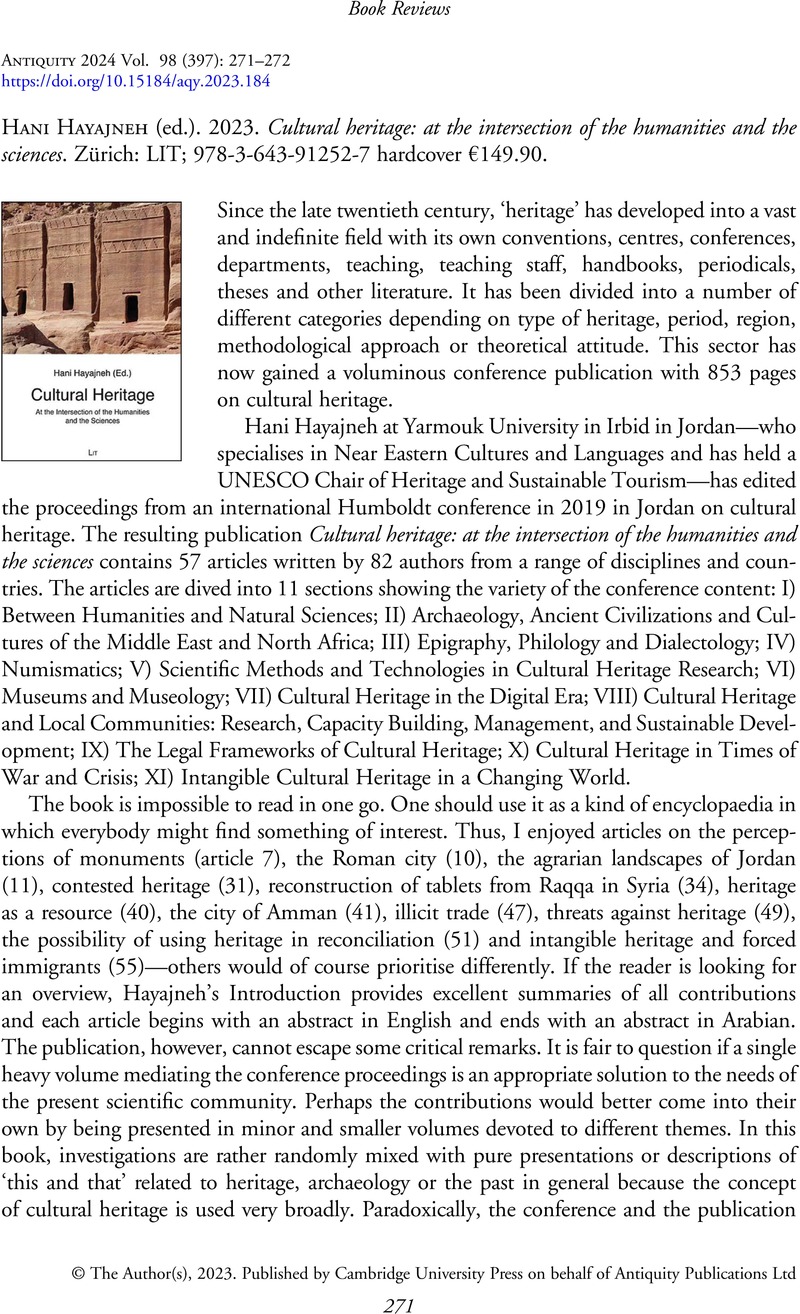No CrossRef data available.
Hani Hayajneh (ed.). 2023. Cultural heritage: at the intersection of the humanities and the sciences. Zürich: LIT; 978-3-643-91252-7 hardcover €149.90.
Review products
Hani Hayajneh (ed.). 2023. Cultural heritage: at the intersection of the humanities and the sciences. Zürich: LIT; 978-3-643-91252-7 hardcover €149.90.
Published online by Cambridge University Press: 19 December 2023
Abstract
An abstract is not available for this content so a preview has been provided. Please use the Get access link above for information on how to access this content.

- Type
- Book Reviews
- Information
- Copyright
- Copyright © The Author(s), 2023. Published by Cambridge University Press on behalf of Antiquity Publications Ltd


